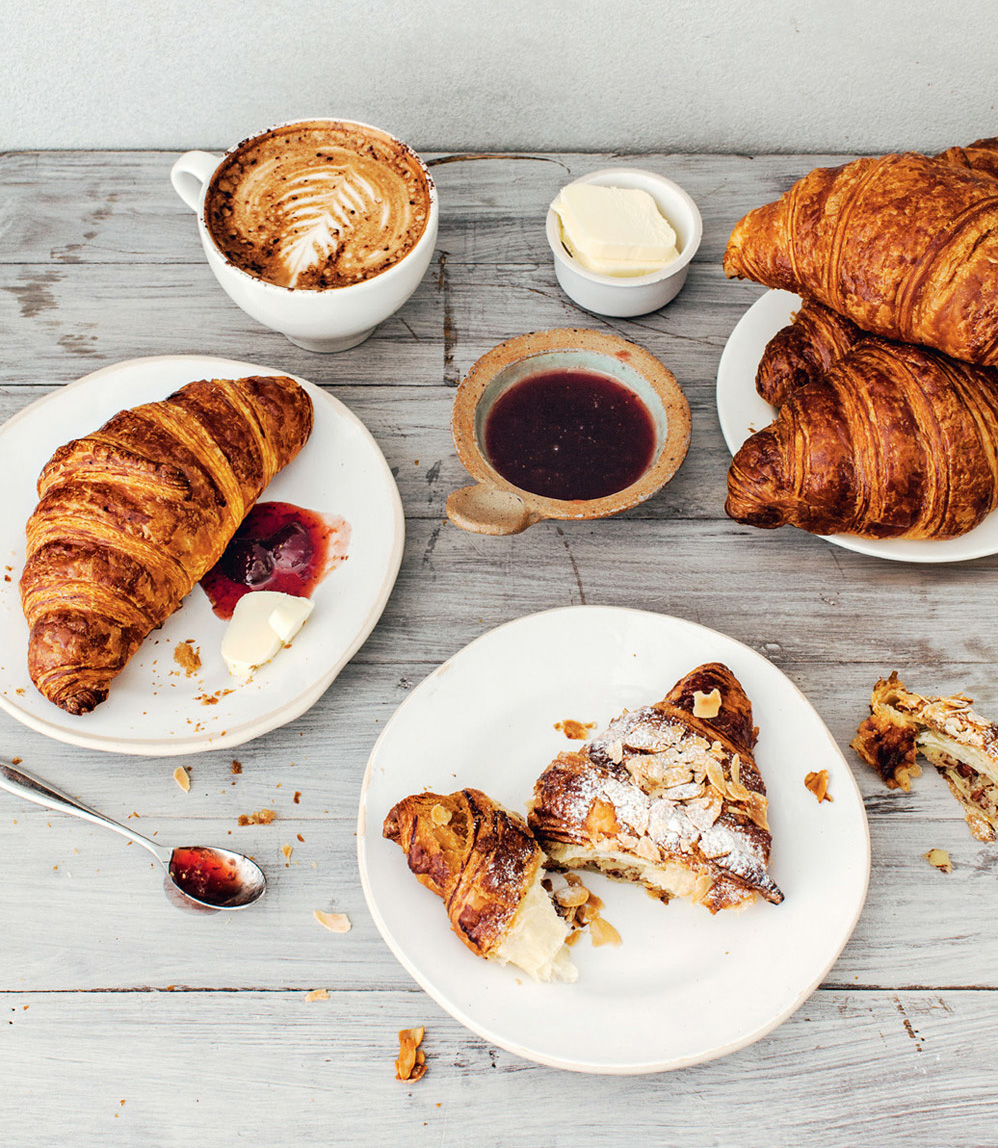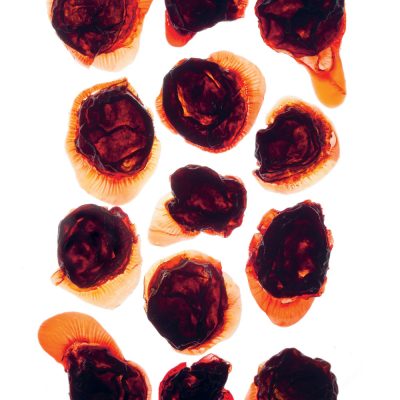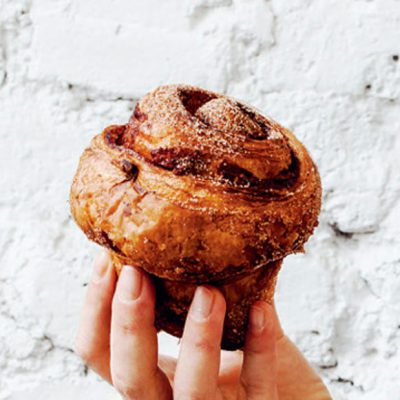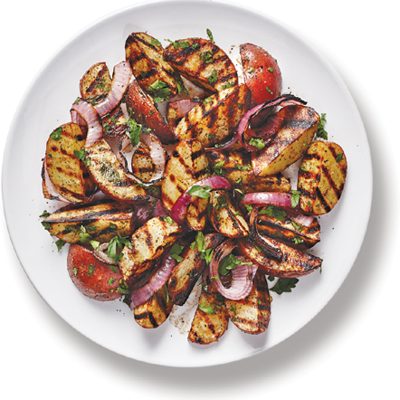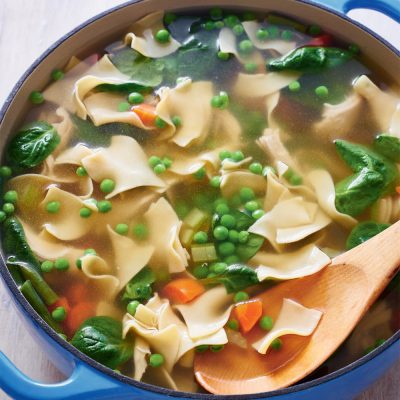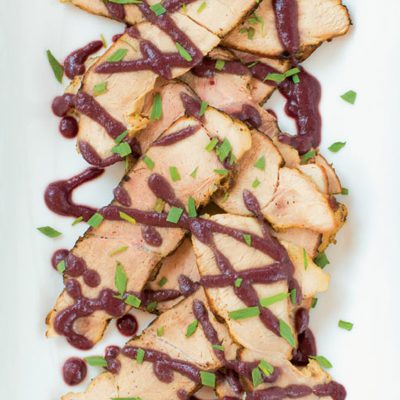Ingredients
-
For the Dough
-
40 g fresh Yeast
-
200 ml cold Water
-
350 g plain Flour
-
750 g strong white Bread Flour
-
110 g Butter
-
80 g Caster Sugar
-
25 g fine Sea Salt
-
350 ml Milk
-
For Laminating the Dough
-
600 g Butter
-
For Glazing
-
Egg
Directions
A good, handmade croissant is a thing of wonder. It’s often said that the real test of a baker is the ability to make a croissant. Whereas bread succumbs to the baker, the baker succumbs to the croissant. If you do decide to put the time and effort into making these, you’ll be well rewarded with a sublime combination of texture, flavour, aroma and colour. Their success hinges partly on the technique and partly on the quality of butter you use: try to find sweet, unsalted French butter, with a high fat content. (See our notes on ingredients at the front of the book.)
This dough is also used to make several other recipes in this chapter, so if you want, you can use half of it for croissants, and half for something else. As so often, the most important ingredient of all is time, and you’ll need to allow a full day to make these – though, of course, you won’t be working on them all the time, you will be able to do other things in between!
Steps
|
1
Done
|
Before you do any baking, make a template for cutting the croissants. Out of a piece of reasonably stiff paper or card – a cereal box or magazine cover will do nicely – cut a triangle with a 12 cm base and two equal 20 cm sides. |
|
2
Done
|
To make the dough, mix the yeast, water and 150 g of the plain flour with a wooden spoon in the bowl of a stand mixer to create a thick paste. Sift over the remaining 200 g plain flour in a thick layer, and leave to sit for 15–20 minutes, until you can see the flour beginning to crack as the yeast works underneath it. Add the strong flour, butter, sugar, salt and milk, and knead on a slow speed using the dough hook for 5 minutes, until you have a soft but not completely smooth dough. |
|
3
Done
|
Tip the dough out of the bowl onto a clean surface and knead by hand for a few more minutes, forming it into a ball. Lightly flour a rolling pin and press the dough out into a rectangle measuring 20 cm × 30 cm × 5 cm. Transfer it onto a baking sheet lined with non-stick baking paper, wrap it well in cling film, and freeze for 30 minutes. |
|
4
Done
|
While the dough chills, take the butter for laminating the dough out of the fridge and leave it to warm up for 15 minutes. Put it into a sandwich bag or between two pieces of plastic film and press it down to create a rectangle of butter, about 15 cm × 20 cm and 1.5 cm thick. Chill until the dough is ready. |
|
5
Done
|
Roll the chilled dough into a long rectangle, 15 cm × 60 cm. Lay it in front of you on the largest surface you have, short edges at the side and long edges at the top and bottom. Press the chilled butter over the right side of the rectangle, then fold the left half on top of it, as if closing a book. Press the dough out with the rolling pin, working away from you, front to back only, not side to side – the direction you roll in is absolutely crucial. Create a rectangle that’s 1 cm thick, and 1 metre long. One long side should be the folded edge, sealed up, the other should be open. |
|
6
Done
|
Mentally draw two lines across the long rectangle stretched out in front of you, dividing it into thirds. Fold the bottom third up, then the top third down over that, rather like folding a letter. Transfer the folded dough back to the baking sheet, wrap in cling film and freeze for another 30 minutes. |
|
7
Done
|
Remove from the freezer, unwrap, and sit the dough in front of you exactly as it was before, like a folded letter, then give it a quarter turn so that the long edges are at the sides and the short edges at the top and bottom. Roll it out again a rectangle 1 cm thick, and 1 metre long. Mentally draw a line half way up the dough, then fold the bottom edge up to meet the centre line, and do the same with the top edge. Finally, fold the entire top half of the dough back down over itself. Return to the baking sheet, wrap, and freeze for 30 minutes more. |
|
8
Done
|
Remove from the freezer, again, and position it in front of you so that the long edges are at the sides. Roll from front to back to create a 40 cm × 60 cm × 5 mm rectangle. Turn the dough again so that the short edges are at the sides, then cut in half, from left to right to give two oblongs, 20 cm × 60 cm. |
|
9
Done
|
Each strip of dough will give 9 croissants, plus a few leftover pieces. With a large, very sharp knife and your stencil, cut out triangles of dough. Don’t drag the blade through the dough: press it down into it in one motion to avoid stretching out the layers you’ve created. |
|
10
Done
|
Shape the triangles into croissants; hold the base of the triangle in one hand and stretch the tip away from it very slightly, to elongate it into an Eiffel tower shape. Start to roll the dough up from the base to the tip, then lay each croissant, tip tucked underneath, onto a baking sheet lined with non-stick baking paper, leaving 5 cm in between each croissant. You’ll need two baking sheets. The best place to prove the croissants is in a completely cold oven. Put them on the centre shelf, along with a small bowl of hot water on the floor of the oven, and shut the door. Leave for 2 hours, until risen and springy to the touch – they won’t double in size. Remove from the oven along with the bowl of water. Preheat the oven to 200°C/gas mark 6. |
|
11
Done
|
Brush the tops of the croissants lightly with egg wash, being absolutely careful not to brush the cut sides of the croissants, with their exposed layers, or you won’t get a flaky result. Place in the oven and immediately reduce the heat to 180°C/gas mark 4. Bake for 20–25 minutes, until a very deep, golden brown. Don’t risk under-baking them. To test, lift one up carefully and ensure that the base is an even, dark gold. Your entire kitchen will smell of baked butter. Eat them within a few hours. |

